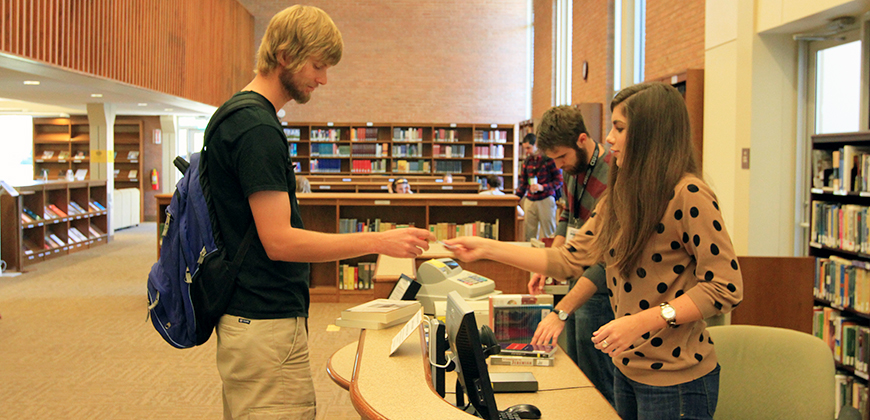Morningside College students give insight on the advantages and disadvantages of working different types of jobs while in school.

Before even applying for a job, students must first decide if they want to get a job on or off campus. Those who are offered work study through financial aid have an easier time making this decision.
Maddie Dotzler, Morningside’s work study and student financial coordinator, works directly with students on finding jobs and keeps them up to date with open positions on campus via email. Dotzler encourages getting a job on campus for any student involved in athletics or extracurriculars.
“Campus employers manipulate the work schedule to go around their open times when they do not have practice and classes,” Dotzler says.
Maleah Richter, sophomore and soccer player, was offered work study on campus and now has two jobs on campus: one in the business office and one on the campus set-up crew.
“I knew Morningside had basically guaranteed me a job on campus when I saw that I was eligible for work study. I thought it was the smarter choice to go with a job they had for me here because it eliminated the need for transportation and gave me flexible hours,” Richter said.
Students not eligible for work study might consider working a job off-campus, gaining outside benefits that the school’s campus payroll could not offer them through a job on-campus.
“The best benefit of working an off-campus job is probably the pay, but it is a bit more difficult to adjust my schedule,” said freshman Kelly Nguyen, a Wal-Mart employee. “At first, my work schedule did interfere with tennis practices because of the amount of hours I was working.”
To balance working almost 26 hours a week, on top of being a full-time student athlete, Nguyen keeps a planner with her daily responsibilities.
“I also try to throw study sessions into my day, like when I’m waiting for my next class to start,” Nguyen said.
Most students are grateful to be paid higher wages and get scheduled more hours at an off-campus job, but many do not understand the difficulties of balancing a part-time job with classes and activities until they have experienced it first-hand.
Sophomore Karlie Reagan worked as a server at Texas Roadhouse her freshman year but chose to get a new job when she returned to campus. Reagan now works as a tutor and study hall proctor for the wrestling team.
“Texas Roadhouse had better pay but couldn’t compete with the ease of a campus job. On campus, you don’t have to worry about driving anywhere or working with people you don’t know or don’t trust,” Reagan said.
For Reagan, a new job meant yet another hiring process. She said that the school had an effective way of hiring students, especially if they previously had any sort of on-campus position.
“You don’t have to do paperwork, you just have to contact the right people,” Reagan stated.
Other students have decided that the experience of the job is just as important as the money earned is. Because of this, they actually have two jobs – one on campus and one off campus.
Junior Hailey Barrus works both as a Morningside student ambassador in the admissions office and as a barista at Stone Bru Coffee. This has proved to be challenging, but also possible because Barrus is determined and strong-willed.
“I have class most days from 8am-3pm then I usually go to work from 3:30-6:30 and, then, in the evening I usually catch up on homework or have rehearsal for something I am involved in,” Barrus said.
Even though she is busy, Barrus sees having an additional off-campus job as a way to network and practice professional skills required for her anticipated career.
“It is a different atmosphere that allows me to branch out to people that are not on campus. Both of these jobs, I feel, prepare me for the future because I am constantly using my communication skills,” Barrus said.
Whatever job a student may decide to get, Dotzler encourages them to communicate with friends, teammates, and classmates about their work experiences.
“I think that a lot of communication helps students figure out what they would like and not like in a job, especially while they have other obligations to school,” Dotzler says.